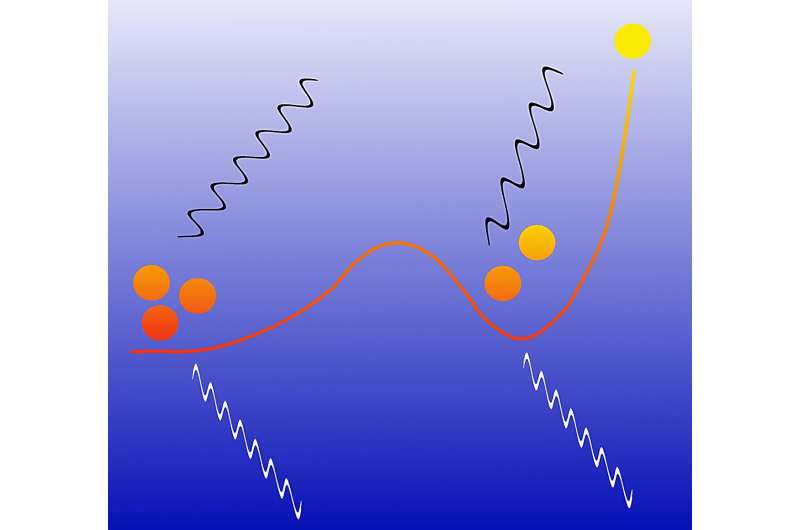This article has been reviewed according to Science X's editorial process and policies. Editors have highlighted the following attributes while ensuring the content's credibility:
fact-checked
peer-reviewed publication
trusted source
proofread
New property of hydrogen predicted

Hydrogen is the most common element in the universe. It determines the properties of stars and planets and is crucial for life on Earth—not least because of its role in climate-neutral energy supply. Generations of scientists in physics and chemistry have researched hydrogen very intensively, both in experiments and with the help of computer simulations. Despite its very simple structure—a hydrogen atom consists of only one electron and one proton—many properties have still not been conclusively clarified.
Now, a research team from Christian-Albrechts-Universität zu Kiel (CAU) and Helmholtz-Zentrum Dresden-Rossendorf (HZDR) has predicted another surprising property of hydrogen: The element shows an unusual "roton-like behavior" when compressed under high pressure. This manifests itself, for example, in the fact that X-ray light is scattered by dense hydrogen in an unusual way.
In the process, the X-ray photons transfer energy to the electrons, which is greater the greater the momentum transferred. In dense hydrogen, on the other hand, the energy can also decrease as the momentum transfer increases. These results are published in the current issue of the journal Physical Review Research and are highlighted by the editors as Editors' Suggestion.
This was previously only found in completely different systems, such as in exotic so-called Bose fluids close to absolute temperature zero. Such liquids are superfluid, for example, quantum effects occur in them and they can no longer be described with classical statistical mechanics. "This property of hydrogen is caused by the electrons, which are not bound in atoms," explains Professor Michael Bonitz from the Institute for Theoretical Physics and Astrophysics at CAU. He led the Kiel research team.
Dr. Tobias Dornheim from the HZDR describes the behavior of the electrons: "If hydrogen is irradiated with X-ray photons of a certain wavelength, electrons can come unusually close to each other and even form pairs, although they repel each other."
In their computer simulations, the research team has worked out exact predictions for which parameters this roton behavior should be observable. Now it is up to researchers in experimental physics to prove it in practice.
More information: Paul Hamann et al, Prediction of a roton-type feature in warm dense hydrogen, Physical Review Research (2023). DOI: 10.1103/PhysRevResearch.5.033039
Journal information: Physical Review Research
Provided by Kiel University





















